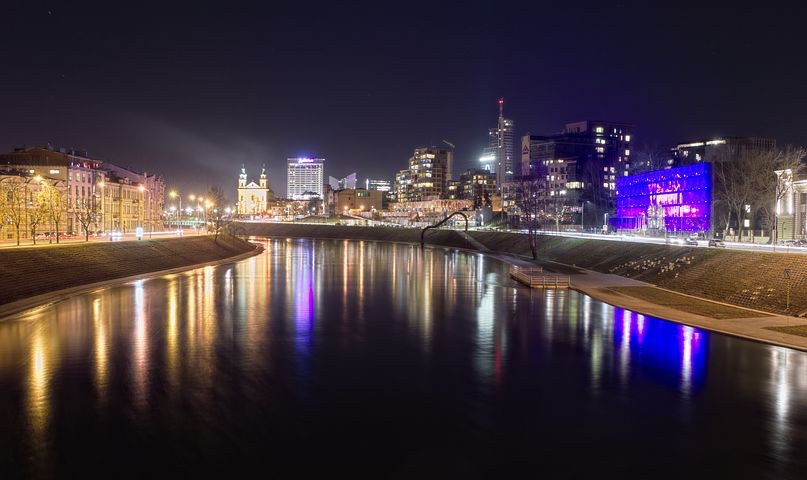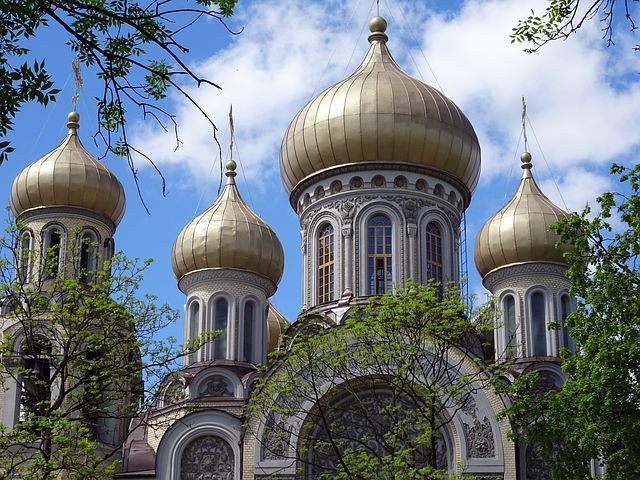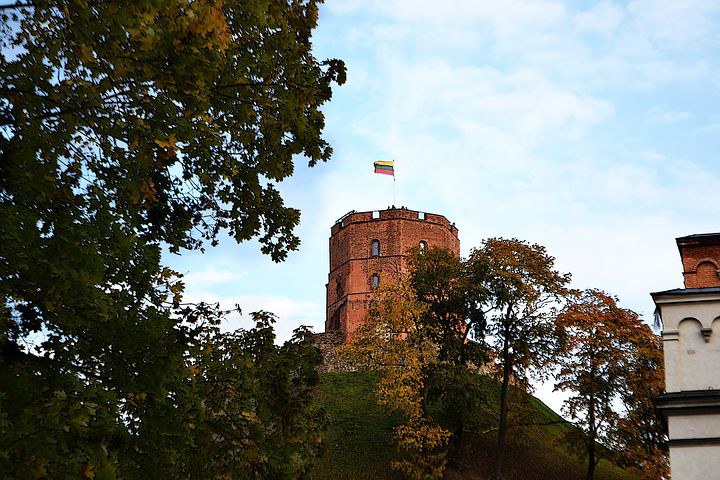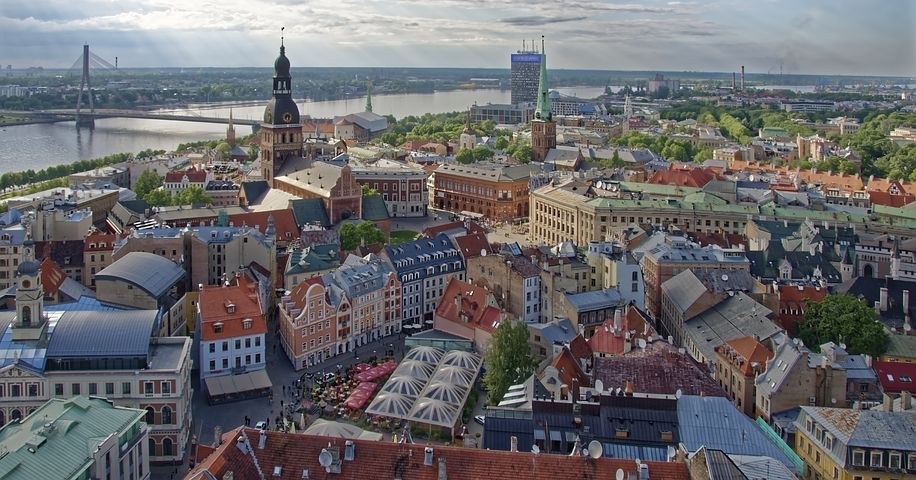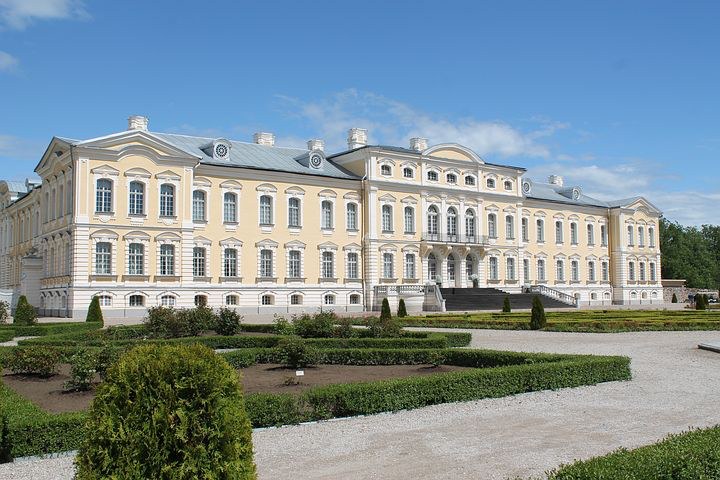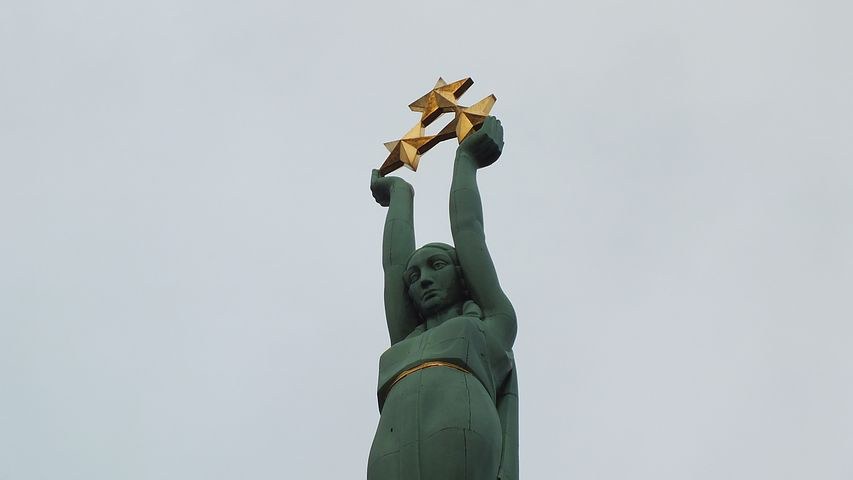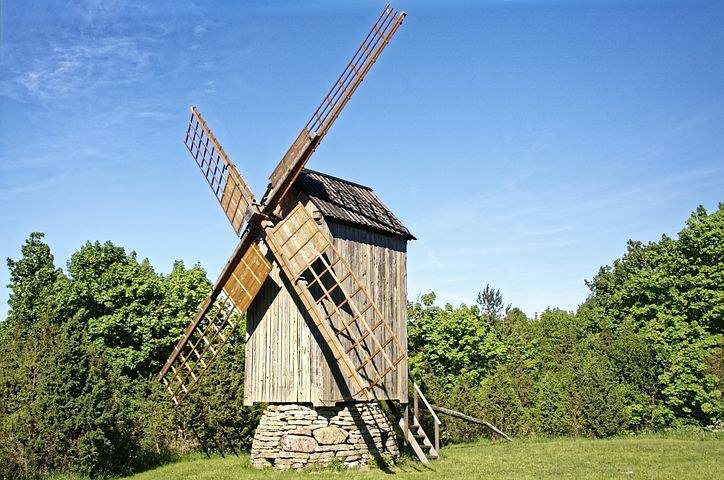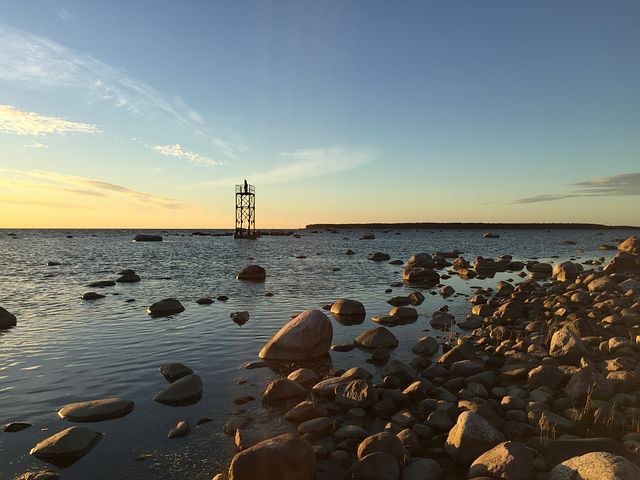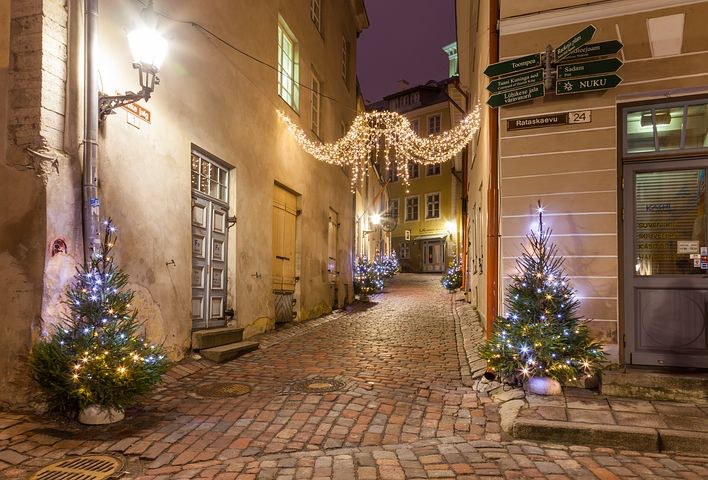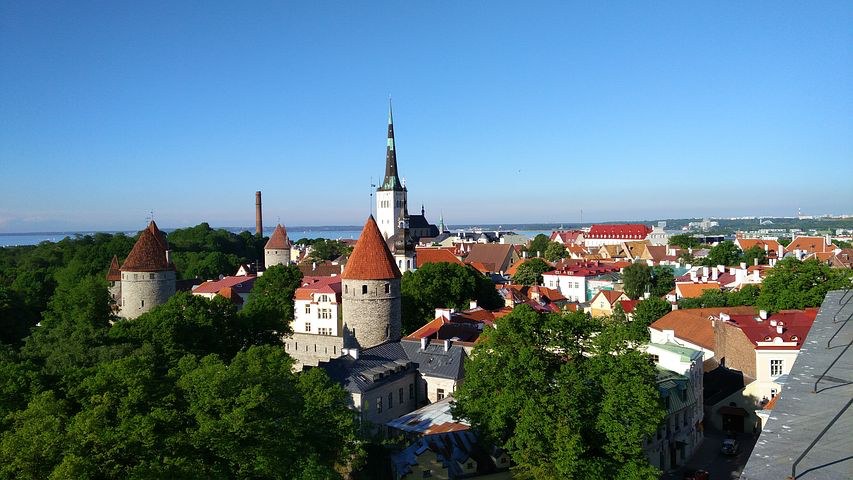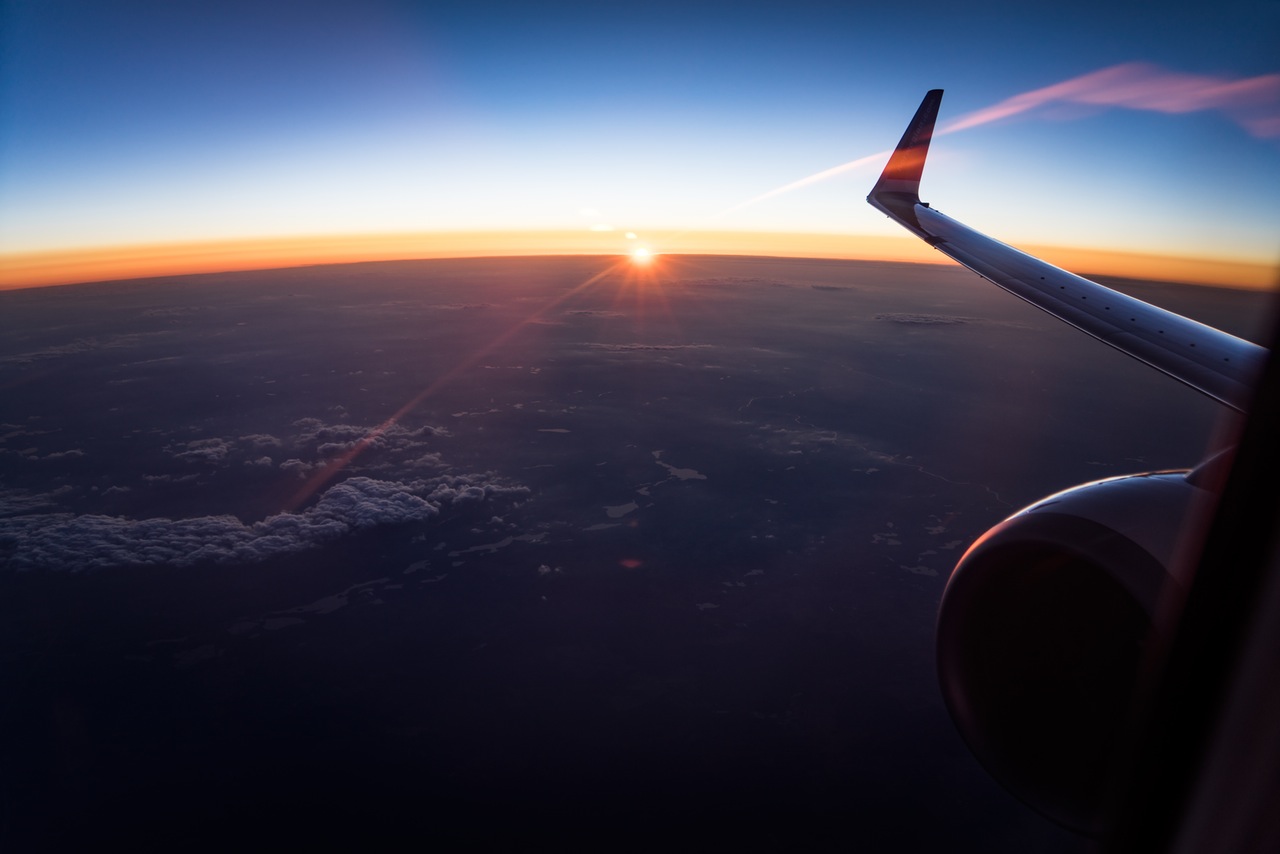On this 11-day Ultimate Baltics journey, stay in the finest accommodations and experience all of the Baltics’ finest attractions! On this trip you will journey through Lithuania, Latvia and Estonia, where you will walk the narrow, medieval streets; take in the UNESCO sites; immerse yourself in the culture and history of the region; and relax as everything is taken care of by your private guide.
Daily Itinerary
Day 1
Details for Today
Arrive in Vilnius, Lithuania
Accommodation: Kempinski Cathedral Square
Welcome to Vilnius, Lithuania!
You will be met by your driver and taken to your hotel in the historic center of the city. Your hotel is the finest in Vilnius, the Kempinski Cathedral Square. This new hotel is located in the heart of Vilnius’ Old Town and is walking distance to all the major sites.
Vilnius Old Town boasts outstanding architectural diversity in one of the largest and best-preserved old towns in Europe. This UNESCO site is filled with Gothic, Renaissance and Baroque masterpieces. Narrow medieval streets, secluded courtyards, town castles and fortifications and an incredible number of churches reflect the city’s rich and vibrant history.
Day 2
Details for Today
Vilnius:
- Enjoy a private-guided tour of the Old Town
Accommodation: Kempinski Cathedral Square
Meals: B
This morning meet your guide in the lobby of your hotel for an overview tour of Vilnius’ Old Town. You will see some of Vilnius’s beautiful churches and the Gediminas Castle Museum, which is part of the National Museum of Lithuania.
The best place to start your tour of the city is from the top of the Gediminas Tower – the only remaining part of the Upper Castle overlooking the red-tiled roofs and the church towers of the Old Town, the cathedral, and the administrative buildings along the main avenue. The 14th century, three-storey octagonal brick tower houses a small exhibit of archaeological findings and the history of the castle which is one of the symbols of Lithuania’s independence. Other surviving buildings at the Castle Complex house offices of the National Museum of Lithuania and its archaeology and numismatics departments, as well as the Museum of Applied Art.
You will also see the Cathedral Square – the main downtown square just in front of the Vilnius Cathedral. It is believed that in pre-Christian times, a Baltic pagan god was worshiped here before the Lithuanian King Mindaugas built the original cathedral in 1251 after his conversion to Christianity. Nowadays, it is the spiritual heart of the country where the coronations of the Grand Dukes of Lithuania once took place and many important historical figures are interred in the crypts and catacombs.
Also here, you will see the Chapel of St. Casimir, where the remains of the Polish-Lithuanian prince Casimir and patron saint of both countries rest. Just behind the Cathedral, the Royal Palace has been under re-construction since 2002. The original 15th -century palace was damaged by fire in the 17th century and remained unused for over a century. In the late 18th century Lithuania was annexed by Russia and the derelict palace was dismantled and the bricks and stones were sold.
A tour of the Old Town is not complete without a visit to the Vilnius University, founded in 1570 by Jesuits and one of the most important centers of the Counter-Reformation. The university complex has more than 10 courtyards.The observatory tower dates back to 1569 and the library contains nearly 5 million volumes, making it the richest collection of Lithuanian books and one of the best-known libraries in Eastern Europe.
Also in the Old Town, you will see the Presidential Palace, which has been the official seat of Lithuania’s President since 1997. A flag displaying the coat of arms of the President is hoisted when the President is in the Palace and in Vilnius.
The Museum of Genocide Victims was opened in 1992 in the very building where plans for the arrests and deportation of thousands of civilian residents and the persecution of opponents of the Soviet Regime were devised and carried out. Located in the former KGB headquarters, the museum is the only one of its kind in the former Soviet republics. The basement of the building houses the isolator where political detainees and espionage suspects were imprisoned from the autumn of 1940 right to 1987. The execution chamber in the basement, where more than a thousand prisoners were killed between 1944 and the early 1960s, can also be visited.
Day 3
Details for Today
Vilnius, and surrounding area:
-
Explore the ancient capital, Trakai
- Visit the Castle Museum
- Learn about Karaite culture at a Karaite Museum
-
Tour the Karaites’ house of worship, Kenesa
Accommodation: Kempinski Cathedral Square
Meals: B
Meet your guide this morning for an excursion outside the city. Today your destination is Trakai, about 20 miles west of the city. Trakai, the ancient capital of the Grand Duchy of Lithuania, is situated amidst picturesque lakes, the largest of which – Galve – has over 20 islands. It is best known for its captivating 14th Century fairytale castle which was presumably one of the largest in Lithuania of those times and served as residence for a number of Lithuanian rulers before the insular castle was constructed a short distance away on an island of Lake Galve.
The Castle Museum offers a view into Lithuania’s past, when Trakai ruled an empire from the Baltics to the Black Sea. The Tartars, once part of this empire’s royal bodyguards, still live in Trakai today. Trakai was also home to a large Karaite community. The origin of the Karaites is very interesting. Some scholars link them to the Khazars, Turkic people that converted to Judaism in the eighth century while others view them as descendants of the Karaite Jews who lived in Crimea. They were brought to Lithuania by Grand Duke Vytautas from the Crimea and served as his bodyguards.
Today you may visit the Karaites’ house of worship, called kenesa, and a museum of Karaite culture.
Day 4
Details for Today
Transfer: Vilnius to Riga, Latvia
En Route to Riga:
- Visit the 17th century Rundale Palace
Accommodation: The Grand Palace Hotel
Meals: B
Today you will depart with your driver and guide for the journey to Riga. Before arriving, visit the 17th century Rundale Palace. Rundale was the apogee of the fusion of German and Russian society which came together and flourished in the region in the 18th and 19th centuries. Visit this imposing, well-restored palace of 138 rooms, approached through a grand drive flanked by twin semi-circular stables.
You may wish to have lunch at the restaurant located inside the palace today. Rundale Palace was designed by the famous architect Rastrelli as a summer residence for the Duke of Courland, and is an exquisite masterpiece of symmetry and beauty. The palace was built from 1736-1740 and the Rococo interior decorations were added from 1765-1768. The parade rooms, the duke’s private apartments and the duchess’ boudoir are open to visitors.
Day 5
Details for Today
Riga:
- Enjoy a private-guided tour of the Old Town
Accommodation: The Grand Palace Hotel
Meals: B
This morning meet your Riga guide for a tour of the Old Town. You will visit the 13th century St. Peter’s Church which was damaged by fire during World War II and later rebuilt by the Russians.
A good place to start any tour is atop the spire, where you can see the whole of Riga laid out before you. This is the perfect way to get your bearings before you actually wander down the cobble-stoned streets.
From here you may see the exterior of the Dome Cathedral one of the largest and most distinctive houses of worship in the region (it is under reconstruction for the next few years).Begun in the 13 century, the cathedral has gone through one construction after another and is now a curious combination of Romanesque, Gothic, Baroque and other styles. The church walls are crammed with plaques celebrating the glories of Latvia’s medieval rulers. The Dome Cathedral is also renowned for its gigantic church organ, the fourth largest organ in the world, complete with 6,768 pipes.
Later today, you will view the famous House of Cats with cat sculptures perched on the top of its roof and hear about the intrigue surrounding these feline figures.
Just across the street, you will also see the former headquarters of the Great Guild, now the home of the Riga Philharmonic. Other good examples of medieval dwellings are the Three Brothers, dating to the 15 century when Riga was part of the Hanseatic League. It is one of the oldest stone buildings in Latvia and now houses an architecture museum. Many of the buildings here and the cobblestone square around them were destroyed in a 1941 bombing raid. The Swedish Gate, an old city gate built by ruling Swedes in 1698, is the only gate still standing from Riga’s old-city wall torn down in the 1800’s.
You will also visit the Museum of the Occupation of Latvia, dedicated to the Nazi and Soviet occupations of Latvia. The various exhibits display the atrocities committed against the people of Latvia and the systematic destruction of their nation’s sovereignty. Visitors can walk into reconstructed gulag barracks and catch a glimpse of the intolerable living conditions in the Siberian labor camps.
Day 6
Details for Today
Riga:
- Visit the Freedom Monument
- Tour the Latvian National Art Museum
- Walk through the Art Nouveau District
- Stop by the Janis Rozentals Museum
- Explore the Central Market
Accommodation: The Grand Palace Hotel
Meals: B
This morning, you will meet your guide for the tour of Riga’s Central District. Not far away from the Old Town, you will stop by the Freedom Monument – a memorial honoring the soldiers killed during the Latvian War of Independence from 1918-1920.
Further away, you will visit the Latvian National Art Museum, which houses more than 52,000 works of art reflecting the development of the arts in Latvia from the middle of the 18th century until the present. It also features Russian art from the 16 to the first half of the 20th century.
The area around Elizabetes and Alberta Streets is known as Riga’s Art Nouveau (or Jugendstil) District, which features impressive examples of the style. In total, there are some 800 Art Nouveau buildings in Riga, many of which were designed and built by Latvian architects including Mikhail Eisenstein (the father of the famous director Sergei Eisenstein).
On Alberta Street, you may decide to stop at the Janis Rozentals Museum, located in a magnificent historic building with Art Nouveau interiors. Janis Rozentals was a renowned Latvian painter and you can see original sketches and portraits displayed in his apartment and workshop.
Continuing along Elizabetes Street, you will reach the Central Market where some old Zeppelin hangars have been converted into market halls specializing in different types of wares. Time permitting, you may decide to spend some time in the Bergs Bazaar – a pedestrian area of shops and restaurants inspired by the 19th -century arcades then so popular all over Europe. It was originally built 1887-1900 by Kristaps Bergs, who was one of Latvia’s first modern real estate.
Day 7
Details for Today
Transfer: From Riga to Muhu Island, Estonia
En Route to Muhu Island:
-
Stop in Parnu to visit the Old Town
- Visit the Museum of the New Art
Accommodation: Pädaste Mano
Meals: B
Today check out of your hotel meet your driver for the journey to the neighboring Estonia. You will drive north along the coast to Parnu, where you may wish to stop for a nice lunch break.
Parnu is Estonia’s main summer resort but has a laid back atmosphere of a small charming town. During Soviet times it was a popular spa escape for the Russians and is now gaining popularity among Scandinavians. You can stroll through the Old Town or on the beach, or, if you like modern art, you should not miss the Museum of the New Art.
Continue your drive to Muhu Island. You will head to the town of Virtsu to board a ferry that will take you to the Island. Then you will drive to the village of Pädaste and check-in at the wonderful hotel Pädaste Manor.
Day 8
Details for Today
Muhu Island:
- Today is at your leisure
Accommodation: Pädaste Mano
Meals: B
Today is at leisure to enjoy the beautiful nature of the Muhu Island.
Alternatively, you may explore the neighboring islands of Saaremaa and Hiiumaa. Hiiumaa is home to several Nature Preserves, ideal for hiking and bird watching, while Saaremaa is especially attractive for retaining its prewar character. You should visit the Bishop’s Castle in Kurresaare, the main town on Saaremaa, that dates back to the 14th century. A half-hour drive from Kurresaare you will encounter a group of beautifully preserved wooden windmills and the medieval Karja Church.
Day 9
Details for Today
Transfer: From Muhu Island to Tallinn, Estonia
- Evening at your leisure
Accommodation: Hotel Telegraaf
Meals: B
Today, check out of your hotel and meet your driver for the journey to Estonia’s capital, Tallinn.
Tallinn has a unique history of seafaring, foreign occupation and merchant activity dating to the 13th century. A beautiful city of ancient castles, stone towers, and medieval streets, its ageless charm is unmistakable.
Check in at your hotel and enjoy the evening at your leisure!
Day 10
Details for Today
Tallinn:
- Visit Toompea Castle
- See the Alexander Nevsky Cathedral and Cathedral of St. Mary
- Tour St. Nicholas Church
- Explore the Museum of Occupation and Fight for Freedom
- Tour the MUMU Art Museum
Accommodation: Hotel Telegraaf
Meals: B
This morning meet your guide in the hotel lobby for a walking tour. The Upper Old City or Toompea Hill, is the oldest part of Tallinn, inhabited since pre-history. Unlike Vilnius and Riga whose walls were destroyed, eighty percent of the original wall around Tallinn in the 1500’s is still intact today. In addition to having Tallinn’s oldest buildings, the upper old town has good viewing platforms to view the entire old town.
Toompea Castle is one of Estonia’s most treasured landmarks, built by Danes and Germans after they defeated the Estonians in the early 1200’s. The Alexander Nevsky Cathedral is an Orthodox church built in 1900 in the Moscow style of the 17th century.
Also on Toompea Hill, you may make a brief stop at the Cathedral of St. Mary, also called the Dome Cathedral. Originally built by the Danes in the 13th century, it is the oldest church in Tallinn and the only building in Toompea which survived a 17th century fire. Most of the furniture inside dates to the period of the 17th – 18th centuries. The altar, chandeliers, and the numerous coats-of arms are from the 17th – 20th centuries.
At the foot of the hill, you will see the St. Nicholas Church, which was originally built in the 13th century by German merchants and dedicated to the patron saint of sailors and merchants. It was partially destroyed when the Soviet air force bombed the city in World War II. After extensive restorations it is now used as an art museum and concert hall.
You will later continue just outside of the Old Town walls and to the Museum of Occupation and the Fight for Freedom. Opened in 2003, the museum chronicles three relatively recent periods of occupation in the country’s history: the first Soviet Occupation of 1940 to 1941, the German occupation from 1941 to 1944, and the second Soviet occupation from 1944 to 1991. The main exhibits feature artifacts from the three eras, a separate area housing documents and other materials for research, and a small theater showing old Communist and Nazi propaganda films.
Afterwards, meet your driver to continue to the KUMU art museum – Estonia’s largest. Opened in 2006 in an enormous, cutting-edge facility built into a limestone cliff in Kadriorg, the KUMU exhibits works from Estonian artists dating from the 18th Century through the end of World War II, as well as a permanent exhibition of Estonian contemporary art dating from 1945-1991.This last collection, located on the third floor, portrays the interesting relationship that existed between the art in Estonia and the Soviet State.
Accommodation
Kempinski Cathedral Square, Vilnius, Lithuania
The Kempinski Cathedral Square is the newest luxury hotel in Vilnius and offers, for the first time, an international five-star property in this charming city.The hotel features just 96 rooms and suites with individual décor. The hotel’s best feature is its location – directly in the heart of the city on Cathedral Square. Rooms feature views of the UNESCO Old Town, the Presidential Palace and the main shopping street of the city.
The Grand Palace Hotel, Riga, Latvia
The Grand Palace Hotel is the finest in Riga and offers one of the best locations in the city. The small lobby leads to a room where guests checking-in are seated and receive individual attention. The ambiance of this hotel is more of a grand mansion, befitting its history of a home to wealthy Baltic aristocrats.
Pädaste Manor, Muhu Island, Estonia
This historic mansion on Muhu Island was first mentioned in the 16th century when the Danish king Fredrik II handed the property over to the von Knorr family in recognition of their services to the crown. After a long and painstaking renovation which was completed in June 2008, this idyllic property has again opened its doors to visitors and offers “simple luxury” in its 24 rooms, suites, and a private beach house all of which are air-conditioned and beautifully appointed with finest furniture and exquisite linen and fabrics.
Hotel Telegraaf, Tallinn, Estonia
The Hotel Telegraaf offers 86 rooms and suites in the heart of Tallinn’s Old Town. The magnificent building at Vene Street 9 was constructed at the end of 19th century. Peter Schreiberg from St. Petersburg designed a 4-storied house, with the two topmost floors being added later. After the Republic of Estonia was established in 1918, the building was used as the post and telegraph center.


